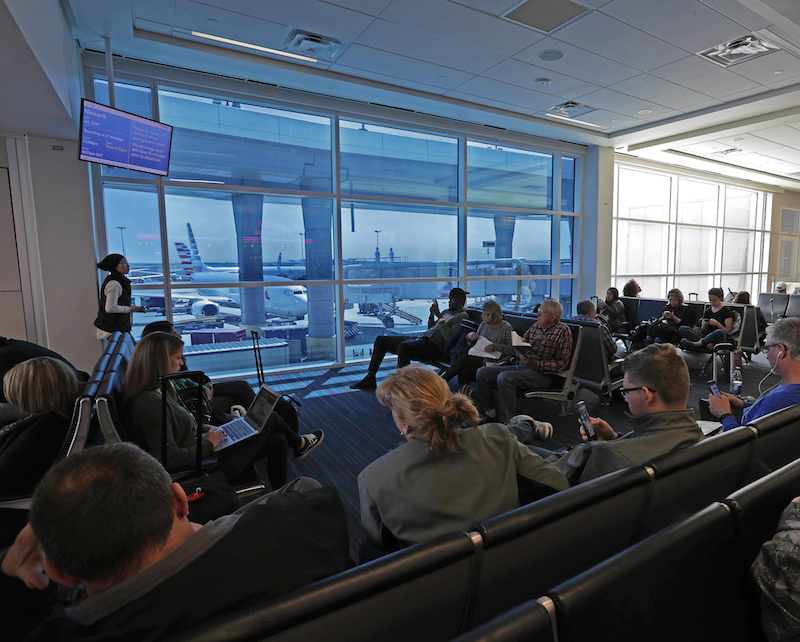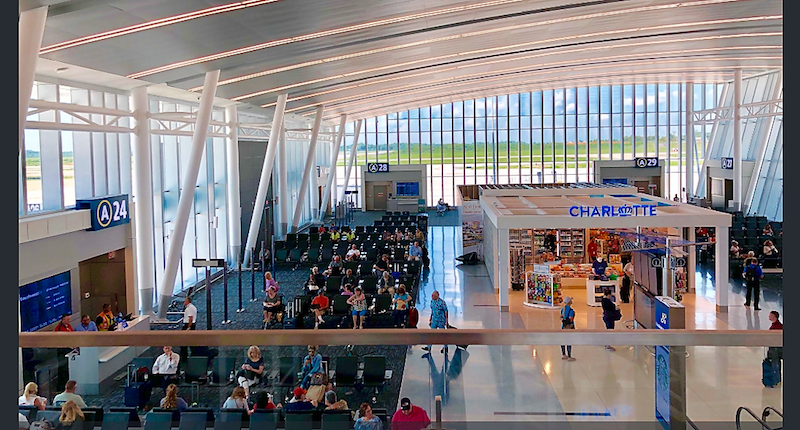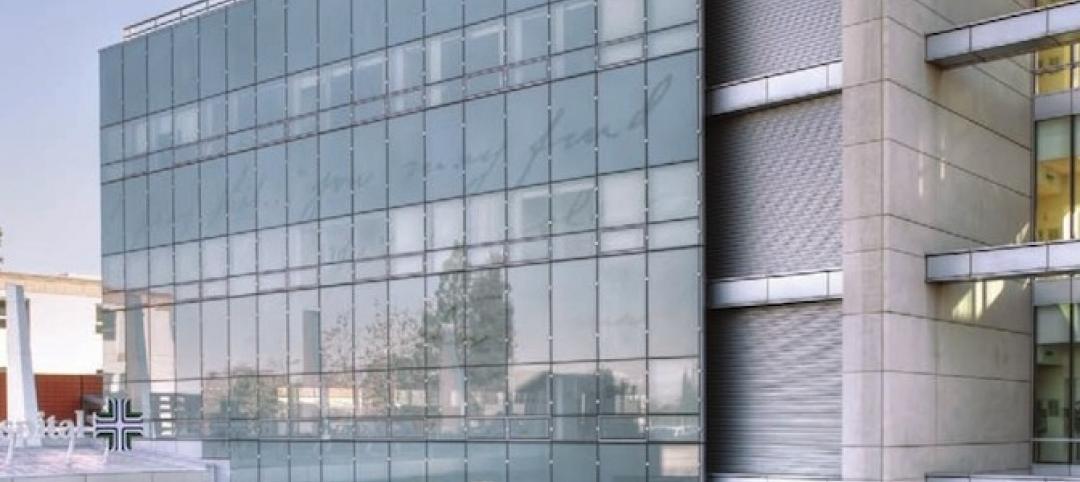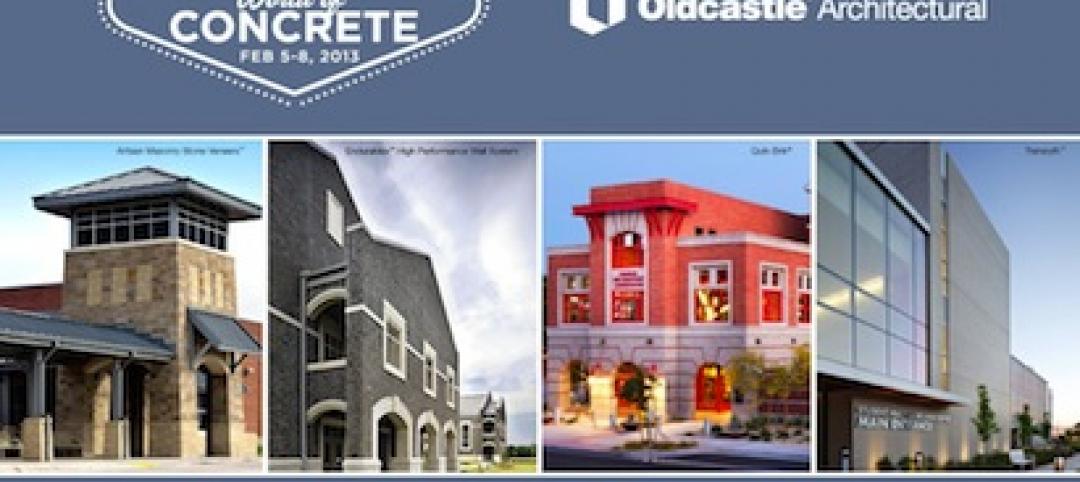Next month, nine remodeled gates inside Terminal 1 at San Francisco International Airport will reopen, with another nine scheduled to reopen in March 2020. The $2.4 billion remodel of this terminal should be completed in 2023.
This 1.2-million-sf net-zero-energy space, designed by Gensler, will include 57,000 sf of dynamic glazing supplied by View, a 12-year-old company based in Milpitas, Calif., that currently has its product in six of the top 15 airports in the U.S.
For example, the Terminal A expansion at Charlotte (N.C.) Douglas Airport included 20,000 sf of dynamic glass, with gate walls that are 40-ft-tall by 50-ft-wide glass walls. “We can do large-format glass that’s critically important to airports,” says Brandon Tinianov, View’s Vice President of Industry Strategy.
Unlike thermochromic glass that responds directly to changes in sunlight and temperature, View’s glass uses nano-layers of electrochromic coating on its surface. When voltage is applied, the glass tints. View’s intelligent system allows the windows to respond to the surrounding environment automatically, to eliminate heat and glare. Tinting of windows in rooms can be controlled by zones.
Tinianov concedes that the upfront cost for View’s glass is a barrier to entry for some clients. That’s why View emphasizes longer-term operating cost benefits, which can be substantial when HVAC systems can be downsized. View claims that its dynamic glass reduces a building’s energy consumption and costs by 18% annually, and can block more than 90% of solar radiation, thereby reducing peak cooling loads by 23%.
Tinianov also points to DFW International Airport in Texas, where View participated in a pilot study to gauge the relationship between passenger experience and revenue. A restaurant near two gates that was underperforming saw its revenue increase, on a year-to-year basis, by 102% after View installed dynamic glass on its eastern façade, says Tinianov.

The waiting area at a gate at DFW International Airport in Texas, with and without tinted glass. Image: Courtesy of View
Since the company’s inception, View has installed its glass in 50 million sf of buildings. Airports represent about 20% of View’s project portfolio. Healthcare and multifamily account for 10% each. And offices represent 60%. “The big value is office towers with thousands of windows,” says Tinianov. This month, the city of San Francisco and the developer Related topped off 49 South Van Ness, a 430,000-sf office building designed by Skidmore, Owings & Merrill that features View’s smart glass.
“We believe that a core role of architecture is improving human performance and enriching the human experience while using as few resources–particularly energy–as possible. The dynamic glass in this building plays a huge part in achieving those goals.” says Mark Schwettmann, SOM’s Design Director.
During the design phase of San Francisco’s Terminal 1 remodel, the building team evaluated six different sustainability measures, and, according to Tinianov, the scenario that included dynamic glass performed the best.
View sees growth potential in promoting dynamic glass for sustainability, health/wellness, and security. Every View installation now includes a smart building platform that consists of power, network, and communication infrastructure. This will allow View to add apps that can help manage a building’s physical and digital security, air quality, and acoustic levels.
Last November View partnered with Microsoft to launch SmartProtect, a window-based security solution that automatically detects glass breakage. The app leverages Microsoft Azure IoT service, Azure Digital Twin.
Related Stories
| Jul 12, 2013
Statue of Liberty Monument bolstered by Vetrotech Saint-Gobain’s fire-rated glass
The Statue of Liberty National Monument reopened to the public featuring two new fire stairwells and an elevator that will allow visitors with reduced mobility to look into the Statue’s interior structure.
High-rise Construction | Jul 9, 2013
5 innovations in high-rise building design
KONE's carbon-fiber hoisting technology and the Broad Group's prefab construction process are among the breakthroughs named 2013 Innovation Award winners by the Council on Tall Buildings and Urban Habitat.
| May 17, 2013
5 things AEC pros need to know about low-e glass
Low-emissivity glasses are critical to making today’s buildings brighter, more energy-efficient, and more sustainable. Here are five tips to help AEC professionals understand the differences among low-e glasses and their impact on building performance.
| May 8, 2013
Preventable curtain wall failures - AIA/CES course
In many cases, curtain wall failures are caused by fairly simple errors that occur during the fabrication and installation process. This presentation will highlight common errors and when they typically occur.
| May 8, 2013
Guardian’s Scott Thomsen headlines Glass Performance Days Finland Conference, June 11-15
Scott Thomsen, president of Guardian Industries Global Flat Glass Group, will engage the global glass technorati in an opening speech at Glass Performance Days Finland June 11-15 in Tampere. In addition, Guardian technologists and scientists will present a wide variety of technical papers and glass industry innovations.
| May 6, 2013
SAFTI FIRST announces 3D Autodesk Revit models for fire rated wall, window, and door systems
SAFTI FIRST, leading USA-manufacturer of fire rated glass and faming systems, is proud to announce that Autodesk Revit models are now available for its fire rated walls, window and door systems via www.safti.com and Autodesk Seek.
| Apr 30, 2013
Tips for designing with fire rated glass - AIA/CES course
Kate Steel of Steel Consulting Services offers tips and advice for choosing the correct code-compliant glazing product for every fire-rated application. This BD+C University class is worth 1.0 AIA LU/HSW.
| Apr 8, 2013
Oldcastle Architectural acquires Expocrete Concrete Products
Oldcastle® Architectural has acquired Expocrete Concrete Products Ltd., giving North America’s largest producer of concrete masonry and hardscape products an increased presence in the high-growth region of western Canada.
| Mar 27, 2013
Small but mighty: Berkeley public library’s net-zero gem
The Building Team for Berkeley, Calif.’s new 9,500-sf West Branch library aims to achieve net-zero—and possibly net-positive—energy performance with the help of clever passive design techniques.
















